High blood pressure metoprolol. Metoprolol: Uses, Side Effects, Interactions, and Precautions for This Beta Blocker
How does metoprolol work to treat high blood pressure and heart conditions. What are the common and serious side effects of metoprolol. How can metoprolol interact with other medications and conditions. What precautions should be taken when using metoprolol.
Understanding Metoprolol: A Comprehensive Overview
Metoprolol is a widely prescribed medication belonging to the beta-blocker class of drugs. It’s primarily used to treat high blood pressure (hypertension), chest pain (angina), and improve survival rates after heart attacks. The extended-release formulation, Toprol XL, is also indicated for managing heart failure. While these are the FDA-approved uses, healthcare providers often prescribe metoprolol off-label for conditions like migraine prevention.
Available under brand names such as Lopressor (immediate-release) and Toprol XL (extended-release), metoprolol works by blocking the effects of epinephrine, also known as adrenaline. This action helps slow down the heart rate and reduces the workload on the heart, effectively lowering blood pressure and improving various cardiovascular conditions.
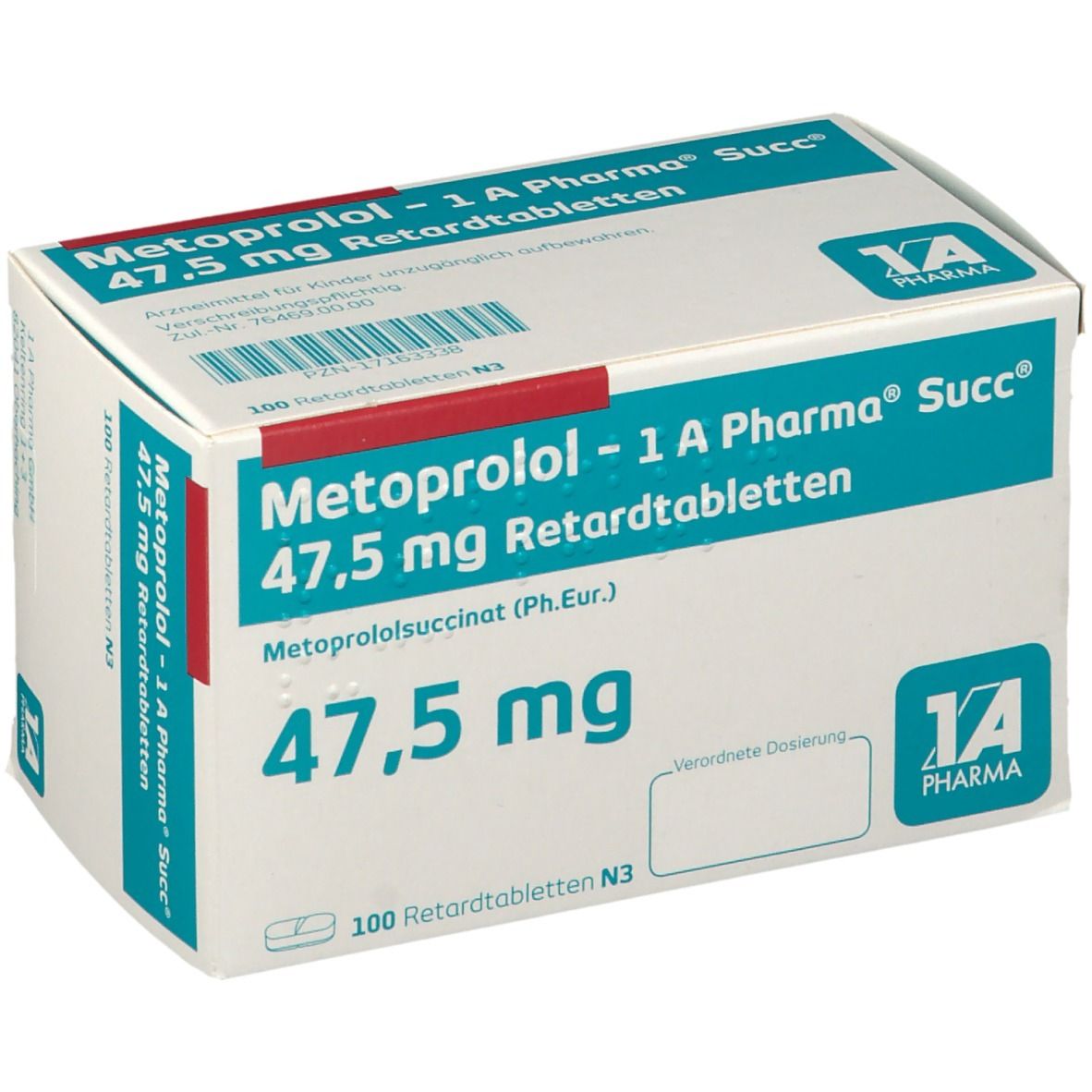
How does metoprolol lower blood pressure?
Metoprolol lowers blood pressure by blocking beta-1 receptors in the heart. This blockade reduces the heart’s responsiveness to stress hormones, resulting in a slower heart rate and decreased force of heart contractions. Consequently, the amount of blood pumped out by the heart decreases, leading to a reduction in blood pressure.
Metoprolol Side Effects: What to Expect and When to Worry
Like all medications, metoprolol can cause side effects. While many people tolerate the drug well, it’s crucial to be aware of potential adverse reactions. Side effects can range from mild and temporary to severe and requiring medical attention.
Common side effects of metoprolol
- Fatigue or weakness
- Dizziness
- Cold hands and feet
- Slow heartbeat
- Shortness of breath
- Nausea or vomiting
- Diarrhea or constipation
- Sleep disturbances
Serious side effects requiring immediate medical attention
- Chest pain or tightness
- Irregular heartbeat
- Fainting
- Swelling of hands, feet, ankles, or lower legs
- Sudden weight gain
- Difficulty breathing or wheezing
- Depression
- Confusion or memory problems
Is it normal to experience side effects when starting metoprolol? Many people experience mild side effects when beginning metoprolol treatment. These effects often subside as the body adjusts to the medication, typically within a few weeks. However, if side effects persist or worsen, it’s important to consult your healthcare provider.
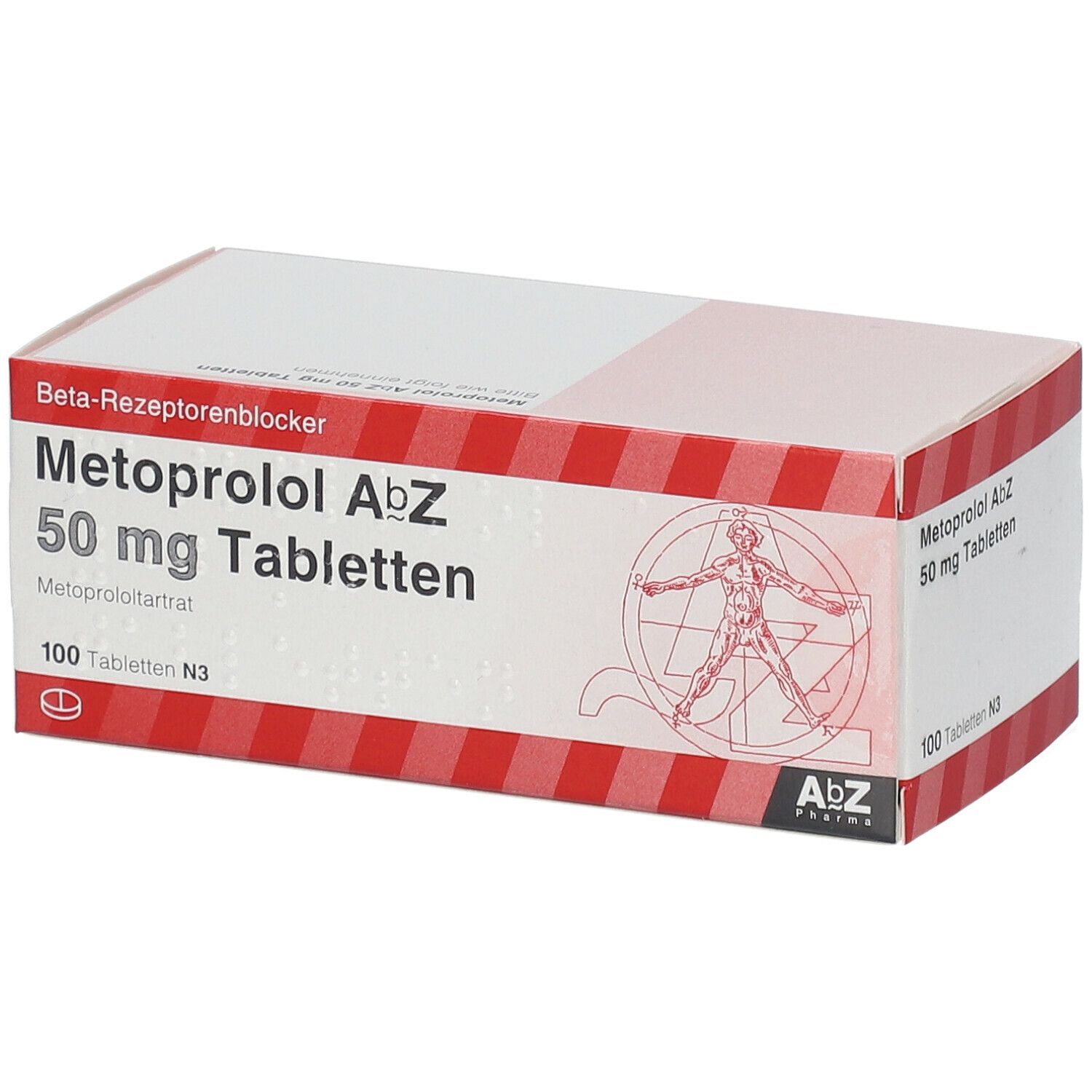
Metoprolol and Weight Fluctuations: Separating Fact from Fiction
Weight changes are a concern for many patients taking metoprolol. While some individuals may experience weight gain, it’s essential to understand the underlying mechanisms and potential management strategies.
Can metoprolol cause weight gain?
Yes, metoprolol can potentially cause weight gain in some individuals. This effect is generally modest, with most people gaining less than 4 pounds. The weight gain is often due to fluid retention, a common side effect of beta-blockers. Additionally, metoprolol may slightly decrease metabolic rate, which can contribute to weight gain over time.
Strategies to manage weight while on metoprolol
- Maintain a balanced, nutritious diet
- Engage in regular physical activity (with your doctor’s approval)
- Monitor your weight regularly
- Stay hydrated to help flush out excess fluids
- Consult your healthcare provider about potential medication adjustments if weight gain becomes significant
Metoprolol and Memory Loss: Exploring the Cognitive Effects
Some patients report experiencing memory issues or cognitive changes while taking metoprolol. While not a common side effect, it’s important to understand the potential impact on cognitive function.

Does metoprolol affect memory?
There is limited evidence suggesting that metoprolol may affect memory and cognitive function in some individuals. These effects are generally mild and may include difficulty concentrating, forgetfulness, or feeling mentally “foggy.” However, it’s important to note that not all patients experience these symptoms, and the effects can vary widely between individuals.
How can cognitive effects be managed? If you’re experiencing memory issues or cognitive changes while taking metoprolol, consider the following steps:
- Keep a symptom diary to track when cognitive issues occur
- Discuss your concerns with your healthcare provider
- Consider cognitive exercises or brain-training activities
- Ensure you’re getting adequate sleep and managing stress
- Your doctor may consider adjusting your dosage or switching to an alternative medication if cognitive effects are significant
Metoprolol and Hair Loss: Understanding the Connection
Hair loss is a less common but potentially distressing side effect associated with metoprolol use. While not life-threatening, it can significantly impact a person’s quality of life and self-esteem.

Can metoprolol cause hair loss?
Yes, metoprolol has been associated with hair loss in some patients. The exact mechanism is not fully understood, but it’s thought to be related to the drug’s effect on blood flow to the hair follicles. Hair loss from metoprolol is typically diffuse (all over the scalp) and reversible upon discontinuation of the medication.
Managing hair loss while on metoprolol
- Consult your healthcare provider to rule out other causes of hair loss
- Consider nutritional supplements that support hair health (with your doctor’s approval)
- Use gentle hair care products and avoid harsh treatments
- Discuss the possibility of switching to an alternative medication if hair loss is severe or distressing
Metoprolol Rash: Identifying and Addressing Skin Reactions
Skin reactions, including rashes, can occur in some individuals taking metoprolol. While often not serious, it’s important to recognize and address these symptoms appropriately.
What does a metoprolol rash look like?
A metoprolol-induced rash can vary in appearance but may present as:
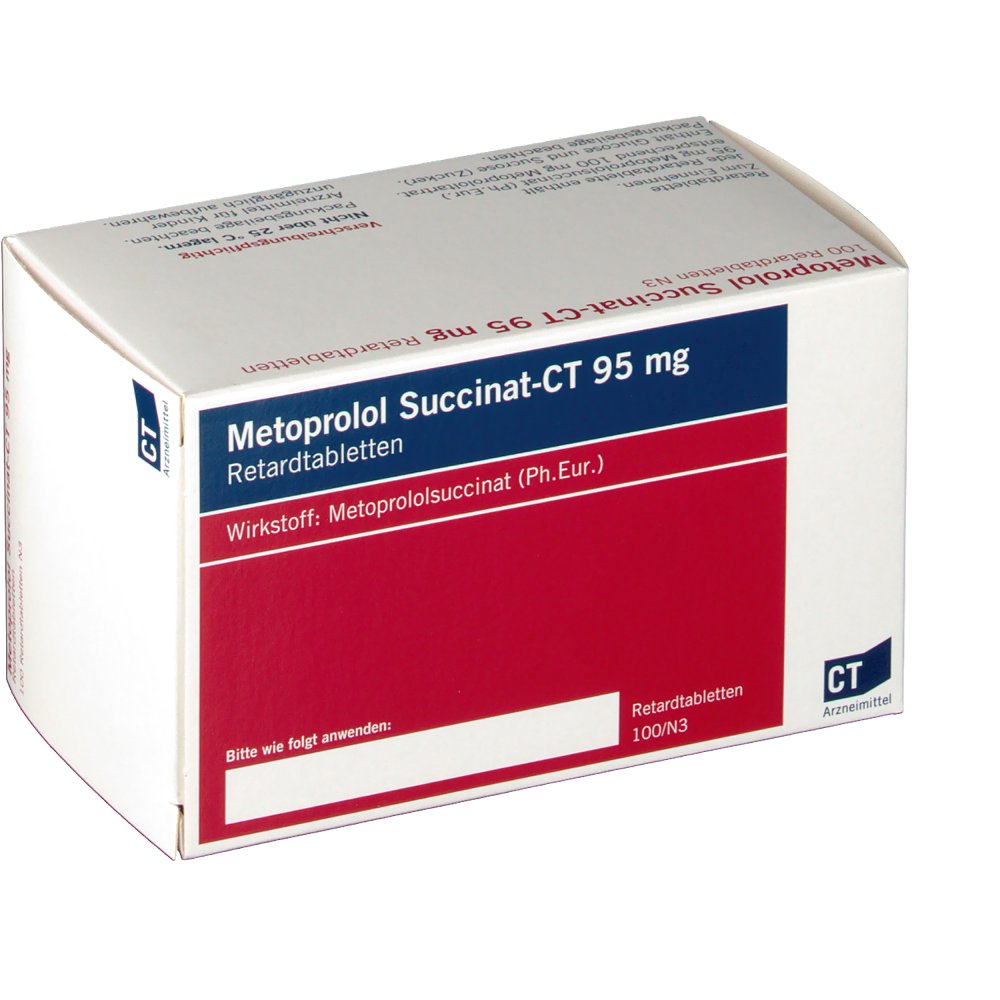
- Red, itchy patches on the skin
- Hives or welts
- Dry, scaly skin
- Small bumps or blisters
In rare cases, a more severe reaction called Stevens-Johnson syndrome can occur, characterized by widespread blistering and peeling of the skin. This is a medical emergency requiring immediate attention.
How to manage a metoprolol-induced rash?
- Don’t stop taking metoprolol without consulting your healthcare provider
- Apply a cool compress to relieve itching
- Use over-the-counter antihistamines or hydrocortisone cream if recommended by your doctor
- Avoid hot showers and use gentle, fragrance-free skincare products
- Seek immediate medical attention if the rash is severe, spreads quickly, or is accompanied by other symptoms like fever or difficulty breathing
Metoprolol Interactions: Navigating Potential Drug Conflicts
Metoprolol can interact with numerous other medications, supplements, and even certain foods. Understanding these interactions is crucial for safe and effective treatment.
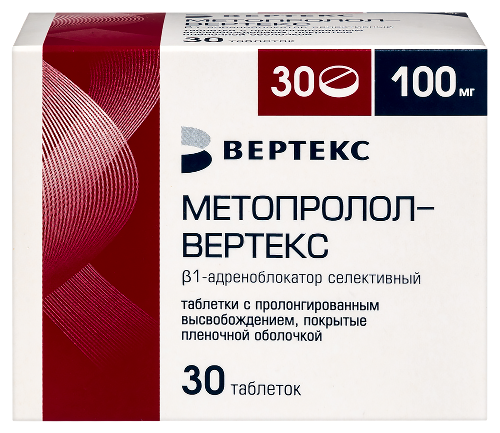
What drugs interact with metoprolol?
Metoprolol has known interactions with over 500 drugs. Some of the most significant interactions include:
- Other blood pressure medications (e.g., calcium channel blockers, ACE inhibitors)
- Antidepressants (especially SSRIs and SNRIs)
- Antiarrhythmic drugs (e.g., amiodarone, quinidine)
- NSAIDs (e.g., ibuprofen, naproxen)
- Diabetes medications
- Certain antifungal medications
- HIV protease inhibitors
How can drug interactions be managed? To minimize the risk of drug interactions:
- Always inform your healthcare provider and pharmacist about all medications, supplements, and herbal products you’re taking
- Don’t start or stop any medication without consulting your doctor
- Be aware of potential food interactions, particularly with grapefruit and grapefruit juice
- Follow your doctor’s instructions carefully regarding dosage and timing of medications
- Consider using a single pharmacy for all your prescriptions to help catch potential interactions
Metoprolol Precautions: Ensuring Safe and Effective Use
While metoprolol is generally safe and effective when used as prescribed, certain precautions should be taken to minimize risks and optimize treatment outcomes.
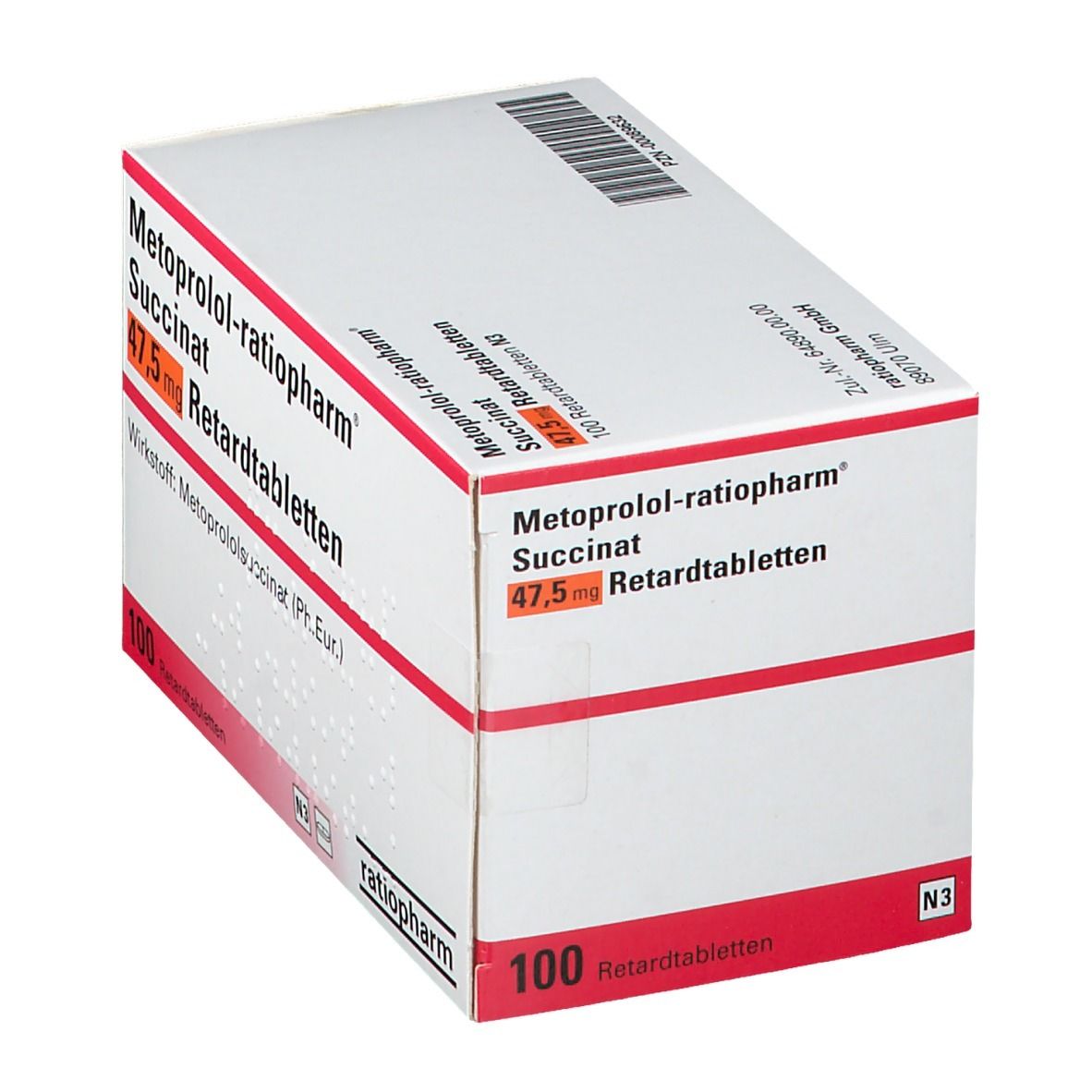
Who should not take metoprolol?
Metoprolol may not be suitable for individuals with certain medical conditions, including:
- Severe bradycardia (slow heart rate)
- Heart block or sick sinus syndrome without a pacemaker
- Cardiogenic shock
- Severe peripheral artery disease
- Uncontrolled heart failure
- Severe liver disease
- Known hypersensitivity to metoprolol or other beta-blockers
Special precautions and considerations
- Gradual discontinuation: Never stop taking metoprolol abruptly, as this can lead to severe cardiac events. Your doctor will guide you on how to taper off the medication if needed.
- Surgery: Inform your healthcare provider if you’re scheduled for surgery, as metoprolol may need to be adjusted.
- Pregnancy and breastfeeding: Discuss the risks and benefits with your doctor if you’re pregnant, planning to become pregnant, or breastfeeding.
- Diabetes: Metoprolol may mask signs of low blood sugar. Monitor your blood glucose levels carefully if you have diabetes.
- Thyroid disorders: Metoprolol can mask symptoms of hyperthyroidism. Regular thyroid function tests may be necessary.
- Allergies: If you have a history of severe allergic reactions, be aware that metoprolol may increase sensitivity to allergens and reduce the effectiveness of epinephrine used to treat anaphylaxis.
By understanding these precautions and discussing any concerns with your healthcare provider, you can ensure the safest and most effective use of metoprolol for your specific health needs.

Metoprolol Interactions Checker – Drugs.com
Save
There are 503 drugs known to interact with
metoprolol, along with
19 disease interactions, and 4 alcohol/food interactions.
Of the total drug interactions,
26 are major, 440 are moderate, and 37 are minor.
Does metoprolol interact with my other drugs?
Enter other medications to view a detailed report.
- View all 503 medications that may interact with metoprolol
- View metoprolol alcohol/food interactions (4)
- View metoprolol disease interactions (19)
Most frequently checked interactions
View interaction reports for metoprolol and the medicines listed below.
- Major
- Moderate
- Minor
- Unknown
- Advair Diskus (fluticasone / salmeterol)
- Aspir 81 (aspirin)
- Aspirin Low Strength (aspirin)
- CoQ10 (ubiquinone)
- Coumadin (warfarin)
- Crestor (rosuvastatin)
- Cymbalta (duloxetine)
- Eliquis (apixaban)
- Fish Oil (omega-3 polyunsaturated fatty acids)
- Lantus (insulin glargine)
- Lasix (furosemide)
- Lexapro (escitalopram)
- Lipitor (atorvastatin)
- Lyrica (pregabalin)
- Nexium (esomeprazole)
- Norco (acetaminophen / hydrocodone)
- Norvasc (amlodipine)
- Plavix (clopidogrel)
- Protonix (pantoprazole)
- Singulair (montelukast)
- Synthroid (levothyroxine)
- Tylenol (acetaminophen)
- Vitamin B12 (cyanocobalamin)
- Vitamin C (ascorbic acid)
- Vitamin D2 (ergocalciferol)
- Vitamin D3 (cholecalciferol)
- Xanax (alprazolam)
- Xarelto (rivaroxaban)
- Zoloft (sertraline)
- Zyrtec (cetirizine)
Metoprolol alcohol/food interactions
There are 4 alcohol/food interactions with metoprolol.
Metoprolol disease interactions
There are 19 disease interactions with metoprolol which include:
- bradyarrhythmia/AV block
- cardiogenic shock/hypotension
- CHF
- diabetes
- hemodialysis
- hypersensitivity
- ischemic heart disease
- PVD
- liver disease
- cerebrovascular insufficiency
- glaucoma
- hyperlipidemia
- hyperthyroidism
- hyperthyroidism PKs
- myasthenia gravis
- pheochromocytoma
- psoriasis
- tachycardia
- asthma/COPD
Report options
Loading…
QR code containing a link to this page
More about metoprolol
- metoprolol consumer information
- Compare alternatives
- Reviews (622)
- Drug images
- Side effects
- Dosage information
- Patient tips
- During pregnancy
- Support group
- Drug class: cardioselective beta blockers
- Breastfeeding
- En español
Related treatment guides
- Atrial Fibrillation
- Aortic Aneurysm
- Angina
- Angina Pectoris Prophylaxis
Drug Interaction Classification
| Major | Highly clinically significant. Avoid combinations; the risk of the interaction outweighs the benefit. |
|---|---|
| Moderate | Moderately clinically significant. Usually avoid combinations; use it only under special circumstances. |
| Minor | Minimally clinically significant. Minimize risk; assess risk and consider an alternative drug, take steps to circumvent the interaction risk and/or institute a monitoring plan. |
| Unknown | No interaction information available. |
Further information
Always consult your healthcare provider to ensure the information displayed on this page applies to your personal circumstances.
Medical Disclaimer
Metoprolol side effects and how to avoid them
Metoprolol side effects include weight fluctuations, memory loss, hair loss, and rash
Common metoprolol side effects | Serious side effects | Weight fluctuations | Memory loss | Hair loss | Rash | Side effects timeline | Contraindications | Warnings | Interactions | How to avoid side effects | How to treat side effects
Metoprolol (brand names: Lopressor, which is immediate-release metoprolol, and Toprol XL, which is extended-release metoprolol) is a generic prescription drug used to treat high blood pressure, treat chest pain (angina), or increase the chances of survival in the weeks and months after a heart attack. The extended-release form of Toprol XL can also be used to treat heart failure. These are the FDA approved uses of metoprolol, but healthcare professionals commonly prescribe it off-label for other medical conditions such as preventing migraine headaches. Belonging to a family of drugs called beta blockers, metoprolol lowers blood pressure by widening blood vessels. It also slows down the heart. This both reduces blood pressure and eases the stress on the heart. Not surprisingly, some of the most common and concerning side effects of metoprolol are related to low blood pressure and heart problems.
It also slows down the heart. This both reduces blood pressure and eases the stress on the heart. Not surprisingly, some of the most common and concerning side effects of metoprolol are related to low blood pressure and heart problems.
Common side effects of metoprolol
Whether taken as immediate-release tablets (metoprolol tartrate) or extended-release tablets (metoprolol succinate), metoprolol’s most common side effects include:
- Tiredness
- Dizziness
- Diarrhea
- Itchiness
- Rash
- Depression
- Trouble breathing
- Slow heart rate
- Low blood pressure (hypotension)
- Trouble sleeping
- Nightmares
Serious side effects of metoprolol
Metoprolol can cause serious side effects including:
- Dangerously slow heartbeat (severe bradycardia)
- Heart failure
- Heart block
- Cardiogenic shock
- Cardiac arrest
- Heart attack (when the drug is abruptly stopped)
- Irregular heartbeats (when the drug is abruptly stopped)
- Wheezing (bronchospasm)
- Allergic reactions
The incidence of some of these serious adverse effects is closely related to the condition being treated. Some are highly unlikely in people only being treated for hypertension. The prescribing healthcare provider can help patients understand the likelihood of serious problems when taking metoprolol.
Some are highly unlikely in people only being treated for hypertension. The prescribing healthcare provider can help patients understand the likelihood of serious problems when taking metoprolol.
Weight fluctuations
Beta blockers such as metoprolol have been associated with weight gain ranging from insignificant to almost 10 pounds after a year of treatment. Most of the weight gain tends to occur in the first few months. Weight gain may not be ideal for people with high blood pressure, heart problems, or diabetes, so patients should talk to a registered dietician at the onset of metoprolol treatment.
Memory loss
Metoprolol can affect the nervous system, causing several issues including sleeping problems and vertigo. Beta blockers other than metoprolol have also caused problems such as depression, disorientation, and memory loss, but many of these other beta blockers pass more readily than metoprolol into the brain. Theoretically, metoprolol could cause these same problems including memory loss, but these are less common in metoprolol patients.
Hair loss
There have been rare reports of people losing their hair while taking metoprolol. This hair loss is reversible if metoprolol is discontinued. If hair loss should occur, it’s likely the prescribing healthcare provider will stop metoprolol treatment.
Rash
In clinical studies, about five in 100 patients taking metoprolol reported mild allergic reactions such as rash and itching. When taking any drug, people should immediately report even the mildest hypersensitivity reactions to the prescribing healthcare provider. Serious allergic reactions, with symptoms of hives, difficulty breathing, or swelling of the face, lips, tongue, or throat, require emergency medical attention.
How soon do metoprolol side effects start?
Some side effects, such as allergic reactions, may happen within hours of taking the first metoprolol tablet. Metoprolol’s beta-blocking effects typically occur about an hour after taking a dose and hit their peak about 30 minutes later, so side effects related to beta blockade may also be experienced early. Other side effects, such as weight gain, typically take several months to become apparent.
Other side effects, such as weight gain, typically take several months to become apparent.
How long do metoprolol side effects last?
Most people will experience minor and reversible side effects when taking metoprolol. Some of these problems will get better as the body adjusts to the drug, and most will go away after the drug has been discontinued. However, some side effects, such as a worsening of angina, occur only when metoprolol is stopped suddenly. Other side effects, such as weight gain, may require treatment and take longer to resolve. Some of the most serious but rare side effects such as heart failure, cardiogenic shock, and heart attack, may have lifelong consequences.
What are the long-term side effects of metoprolol?
In some cases, metoprolol can cause problems that cannot be reversed by discontinuing the drug. These are, fortunately, rare, and typically associated with people taking metoprolol for heart attack. Most of these problems are heart-related: heart attack, cardiogenic shock, heart block, and heart failure. However, in clinical trials, these events occurred only slightly more often or less often in people taking metoprolol compared to those given a placebo.
However, in clinical trials, these events occurred only slightly more often or less often in people taking metoprolol compared to those given a placebo.
Metoprolol contraindications
As with all prescription medications, metoprolol is not suitable for everyone. Pre-existing medical conditions can increase the risk of problems, so anyone with the following problems cannot safely take metoprolol:
- Serious heart problems: Slow heart rate, heart block, decompensated heart failure, and heart rate irregularities (sick sinus syndrome) all increase the likelihood that metoprolol will cause severe heart problems. Healthcare providers will also avoid giving metoprolol as a heart attack treatment to any person with moderate to severe heart failure.
- Low blood pressure: If systolic blood pressure (the top blood pressure number) is too low, metoprolol will be avoided.
- Allergic reactions to metoprolol or other beta blockers.

- Severe problems with blood vessels.
Metoprolol warnings
People using metoprolol should not be overly concerned about serious problems with the drug itself. Metoprolol has a boxed warning, which is the most serious warning by the Food and Drug Administration (FDA). The warning states that metoprolol should not be abruptly discontinued in patients with coronary artery disease, because it can cause worsening of chest pain, heart attack, or irregular heartbeat. If/when metoprolol is discontinued, the healthcare provider will give the patient a tapering schedule and monitor the patient closely.
In certain cases, pregnant and nursing women may be given metoprolol, but anyone who is pregnant, trying to become pregnant, or breastfeeding should tell the prescriber before taking this drug.
Metoprolol recalls are rare and have been limited to manufacturing problems by individual generic manufacturers rather than actual problems with the drug itself. Metoprolol has not been associated with drug abuse, dependency, or withdrawal.
Metoprolol has not been associated with drug abuse, dependency, or withdrawal.
However, taking too much metoprolol can cause serious problems including heart failure, heart attack, and death. Symptoms of an overdose include slowed heart rate, low blood pressure, and wheezing. If a patient or caretaker suspects that too much metoprolol has been taken, seek emergency medical treatment.
Metoprolol can be taken safely by many people with pre-existing conditions, but certain conditions may require extra monitoring. These include:
- Cardiovascular problems such as heart failure, coronary artery disease, first-degree heart block, irregular heartbeats, or problems with peripheral blood vessels. Metoprolol may worsen these conditions.
- People withg diabetes require closer monitoring of blood glucose levels, because metoprolol may mask some symptoms of low blood sugar.
- People with asthma or similar lung problems will need to be monitored for breathing issues.

- People with liver problems may require dose adjustments because their body does not eliminate metoprolol as efficiently as other people. Without a dose adjustment, higher concentrations of metoprolol will accumulate in the body, making side effects more likely.
- Older patients, too, are more likely to eliminate the drug slowly and have higher-than-normal concentrations of metoprolol in their blood. A lower starting dose is recommended.
- People with angina will generally take tapering doses when metoprolol is stopped. If discontinued abruptly, metoprolol can cause chest pain to worsen.
Metoprolol interactions
As with other prescription drugs, many problems with metoprolol can occur due to drug interactions. Most of these problems are additive: combining metoprolol with these drugs amplifies the effects of one or both drugs. None of these other drugs are strictly prohibited, but a healthcare provider will watch more closely for side effects or other problems.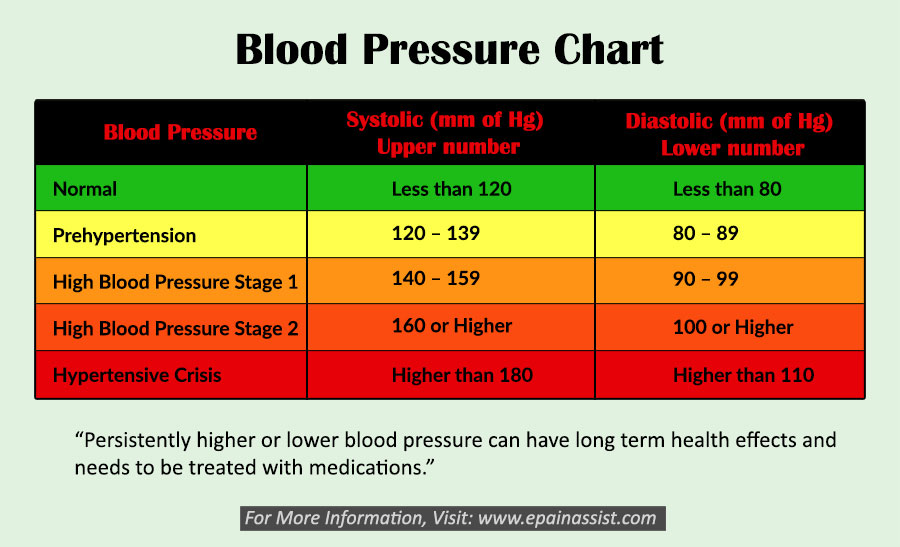 Drugs that are significant include:
Drugs that are significant include:
- Other beta blockers such as atenolol or propanolol
- Other blood pressure drugs, particularly certain calcium channel blockers and alpha blockers
- Digitalis medications such as digoxin that treat heart failure and irregular heart rate
- Migraine drugs (ergots and triptans)
- NSAIDs
- Certain types of allergy medications like epinephrine
- Drugs that interfere with the body’s ability to metabolize metoprolol (CYP2D6 inhibitors)
- Foods that lower blood pressure such as garlic and flaxseed.
There is one drug called Marplan (isocarboxazid), an older antidepressant, that is never prescribed with blood pressure drugs. This restriction includes beta blockers like metoprolol. It’s not the most common antidepressant, but it’s generally a good idea to tell the prescribing healthcare provider about any antidepressants that are being taken. Many types of antidepressants, such as SSRIs including Paxil (paroxetine) and Prozac (fluoxetine), could interfere with the body’s ability to break down and eliminate metoprolol and so increase the risk of serious side effects.
Many types of antidepressants, such as SSRIs including Paxil (paroxetine) and Prozac (fluoxetine), could interfere with the body’s ability to break down and eliminate metoprolol and so increase the risk of serious side effects.
How to avoid metoprolol side effects
Metoprolol is a life-saving drug. Fortunately, most people taking the drug for hypertension or chest pain will experience only minor problems. There’s a greater risk of severe problems when metoprolol is used to treat heart attack, but these effects do not compare with the immediate risks that follow from a heart attack. For all people, however, there are a few common-sense strategies to minimize metoprolol side effects.
1. Tell the healthcare provider about all medical conditions
The most certain way to prevent side effects from any drug is to make sure the prescribing healthcare provider is well-informed about current and past medical conditions. For metoprolol, make sure the healthcare provider knows about:
- Heart disease
- Circulation problems
- Asthma or COPD
- Liver disease
- Diabetes or thyroid problems
- Pheochromocytoma (adrenal gland tumor)
- Any upcoming major surgery
- Pregnancy or any plans to become pregnant
2.
 Tell the healthcare provider about all medications being taken
Tell the healthcare provider about all medications being taken
Make sure your prescriber knows about all prescription drugs, over-the-counter medications, and vitamins or supplements being taken. The most important are:
- Blood pressure drugs
- Heart rhythm drugs like digoxin
- Migraine drugs
- NSAIDs
- Antidepressants
3. Take metoprolol as directed
Follow the directions given by the prescriber or printed on the prescription label. Do not take more than directed or reduce the dose.
4. Don’t miss a dose
Taking too much metoprolol will cause side effects, and a common way to take too much is to miss a dose of metoprolol (and then try to make up for it by taking two doses close together). Use alarms or phone apps to help take doses. In case of a missed dose, take the dose when remembered, but avoid taking it when the next dose is soon to be taken. Don’t take a double dose to make up for a missed dose.
Don’t take a double dose to make up for a missed dose.
5. Check blood pressure often
When taking any blood pressure medication, it’s a good idea to purchase a blood pressure monitor and check blood pressure regularly. Share your readings with your healthcare provider. Always do a blood pressure reading at any sign of hypotension (low blood pressure) such as dizziness, lightheadedness, or fainting.
6. Stand up and move slowly
Any dizziness or lightheadedness experienced while taking metoprolol can be minimized by moving carefully and standing up slowly. This will help prevent fainting and falls.
7. Avoid alcohol
Alcohol is not prohibited, but it may be a good idea to stop drinking if there are problems like dizziness or low blood pressure when taking metoprolol. People taking extended-release metoprolol will be counseled to avoid alcohol entirely.
8. Avoid driving at first
Metoprolol may affect a person’s ability to safely drive or engage in potentially risky activities like operating machinery or sports. To prevent possibly serious problems, healthcare professionals will advise patients to hold off on driving, operating machinery, or other risky activities until the effects of the drug are understood.
To prevent possibly serious problems, healthcare professionals will advise patients to hold off on driving, operating machinery, or other risky activities until the effects of the drug are understood.
How to treat side effects of metoprolol
Most people will only experience minor problems with metoprolol. Many side effects will improve over time, and others can be treated by making lifestyle changes to either adapt or prevent these side effects. For instance, dizziness and lightheadedness can’t be treated, but people who experience them should take precautions such as removing obstacles in the home or moving (and standing up) slowly. Avoiding driving and dangerous activities is also a good idea. People experiencing weight gain should consult with a registered dietician to help slow or stop the weight gain.
Other side effects will require medical treatment or, at the very least, the medical advice of a healthcare professional. The most serious side effects are known primarily by their symptoms, so talk to a healthcare provider if any of these are experienced:
- Signs of an allergic reaction
- Hives
- Swelling of the face, lips, tongue, or throat
- Trouble breathing
- Trouble swallowing
- Signs of heart problems
- Very slow heartbeats
- Severe dizziness or lightheadedness
- Shortness of breath
- Rapid weight gain
- Swelling
- Nervous system problems
- Depression
- Disorientation
- Confusion
- Memory loss
Sources
- Beta blocker recalled, Pharmacy Learning Network
- Drugs that affect body weight, body fat distribution, and metabolism, Endotext
- Hypothesis: Beta-adrenergic receptor blockers and weight gain: A systematic analysis, U.
 S. National Library of Medicine
S. National Library of Medicine - Marplan prescribing information, U.S. National Library of Medicine
- Metoprolol-associated central nervous system complications, Cureus
- Metoprolol succinate, Epocrates
- Metoprolol tartrate, Epocrates
- Metoprolol tartrate prescribing information, U.S. National Library of Medicine
- Mylan recalls blood pressure med, following recalls of generic by two other drugmakers, Fierce Pharma
Metoprolol in the pharmacotherapy of arterial hypertension | partners
The results of randomized controlled trials have demonstrated the undoubted benefit of a number of non-drug interventions and pharmacological interventions in patients with high blood pressure. The term “arterial hypertension” means a syndrome of increased systolic blood pressure (SBP) ≥ 140 mm Hg. Art. and/or diastolic blood pressure (DBP) ≥ 90 mm Hg. Art. [1]. In addition to drug normalization of blood pressure, all patients are recommended to correct their lifestyle. Smoking cessation, weight normalization, reduced salt intake, physical activity and a diet with sufficient intake of plant foods, an increase in potassium, calcium (found in vegetables, fruits, grains) and magnesium (found in dairy products) in the diet have proven effectiveness, as well as a decrease in the consumption of animal fats, eating fish at least twice a week, 300-400 g per day of vegetables and fruits. It seems possible to limit oneself to non-drug efforts only if the patient has low risks of adverse cardiovascular events and has reached the target level of blood pressure. Clinical practice shows that non-drug measures effectively reduce blood pressure only in a limited number of patients with hypertension, most patients, even with low risks of cardiovascular complications of hypertension, require medication to control blood pressure.
Art. [1]. In addition to drug normalization of blood pressure, all patients are recommended to correct their lifestyle. Smoking cessation, weight normalization, reduced salt intake, physical activity and a diet with sufficient intake of plant foods, an increase in potassium, calcium (found in vegetables, fruits, grains) and magnesium (found in dairy products) in the diet have proven effectiveness, as well as a decrease in the consumption of animal fats, eating fish at least twice a week, 300-400 g per day of vegetables and fruits. It seems possible to limit oneself to non-drug efforts only if the patient has low risks of adverse cardiovascular events and has reached the target level of blood pressure. Clinical practice shows that non-drug measures effectively reduce blood pressure only in a limited number of patients with hypertension, most patients, even with low risks of cardiovascular complications of hypertension, require medication to control blood pressure.
Modern pharmacological possibilities in the treatment of HD are based on the use of eight clinical and pharmacological groups of drugs. According to current recommendations for the management of patients with arterial hypertension, therapy can be started with any class of antihypertensive drugs, provided that they correspond to the individual characteristics of patients, in particular, the presence of target organ damage, associated clinical conditions, contraindications to various drugs [1,2]. From the point of view of the polyvalence of the effect, the group of beta-blockers is of particular interest, in classical pharmacology belonging to three basic clinical and pharmacological classes of drugs at once: antihypertensive, antianginal and antiarrhythmic [3]. The creation of the first beta-blocker propranolol was a powerful breakthrough in medicine, for the study of this drug, Professor J.W. Black and his staff at 1988 year awarded the Nobel Prize in Physiology or Medicine [4]. Scientists have directed further efforts to obtaining selective ligand molecules for beta1-adrenergic receptors. Metoprolol is one of the most studied beta1-blockers that has been successfully used since 1979.
According to current recommendations for the management of patients with arterial hypertension, therapy can be started with any class of antihypertensive drugs, provided that they correspond to the individual characteristics of patients, in particular, the presence of target organ damage, associated clinical conditions, contraindications to various drugs [1,2]. From the point of view of the polyvalence of the effect, the group of beta-blockers is of particular interest, in classical pharmacology belonging to three basic clinical and pharmacological classes of drugs at once: antihypertensive, antianginal and antiarrhythmic [3]. The creation of the first beta-blocker propranolol was a powerful breakthrough in medicine, for the study of this drug, Professor J.W. Black and his staff at 1988 year awarded the Nobel Prize in Physiology or Medicine [4]. Scientists have directed further efforts to obtaining selective ligand molecules for beta1-adrenergic receptors. Metoprolol is one of the most studied beta1-blockers that has been successfully used since 1979. Experts emphasize the equivalent antihypertensive effect of traditional beta-blockers and new generations with vasodilating properties [5]. The high antihypertensive efficacy of metoprolol has been proven by many studies [6-8]. Metoprolol in the treatment of GB is actively used in real clinical practice. In 2017, the results of a study were published that showed that, compared with chlorthalidone 25 mg/day, metoprolol 200 mg/day is more effective in patients under 50 years of age [9]. Of particular value in the clinic are drugs that normalize DBP. Against the background of metoprolol, DBP decreased by -9.6 ± 8.0 compared with the diuretic -5.9 ± 6.8 mm Hg (P =. 003).
Experts emphasize the equivalent antihypertensive effect of traditional beta-blockers and new generations with vasodilating properties [5]. The high antihypertensive efficacy of metoprolol has been proven by many studies [6-8]. Metoprolol in the treatment of GB is actively used in real clinical practice. In 2017, the results of a study were published that showed that, compared with chlorthalidone 25 mg/day, metoprolol 200 mg/day is more effective in patients under 50 years of age [9]. Of particular value in the clinic are drugs that normalize DBP. Against the background of metoprolol, DBP decreased by -9.6 ± 8.0 compared with the diuretic -5.9 ± 6.8 mm Hg (P =. 003).
A distinctive feature of arterial hypertension is the high frequency of comorbidity. Patients with arterial hypertension, as a rule, have one or more comorbidities, which leads to a mutual negative effect on the course of diseases, increases the frequency of negative effects of polypharmacy, and determines the features of the choice of antihypertensive drugs [10,11]. A number of studies have demonstrated the effects of metorolol in various clinical situations. Often, hypertension is complicated by kidney pathology with the development of chronic kidney disease. Having a theoretical basis for differentiating pharmacodynamic effects depending on the selectivity of beta-blockers, Theresa I. Shireman et al. [12] studied the effectiveness of beta-blockers in patients with chronic dialysis. The authors proved that cardioselective drugs (atenolol and metoprolol) are associated with a significant 16% reduction in mortality relative to non-selective drugs (carvedilol and labetalol).
A number of studies have demonstrated the effects of metorolol in various clinical situations. Often, hypertension is complicated by kidney pathology with the development of chronic kidney disease. Having a theoretical basis for differentiating pharmacodynamic effects depending on the selectivity of beta-blockers, Theresa I. Shireman et al. [12] studied the effectiveness of beta-blockers in patients with chronic dialysis. The authors proved that cardioselective drugs (atenolol and metoprolol) are associated with a significant 16% reduction in mortality relative to non-selective drugs (carvedilol and labetalol).
Despite the importance of the effect of beta-blockers on blood pressure and the progression of CHF, the instructions for each representative of this class indicate a limitation of use associated with the presence of broncho-obstructive disease [13]. On the other hand, the pharmacodynamic priorities of this class have caused a series of studies that have shown the possibility of using, in particular, metoprolol, in a number of patients with chronic broncho-obstructive pulmonary disease (COPD).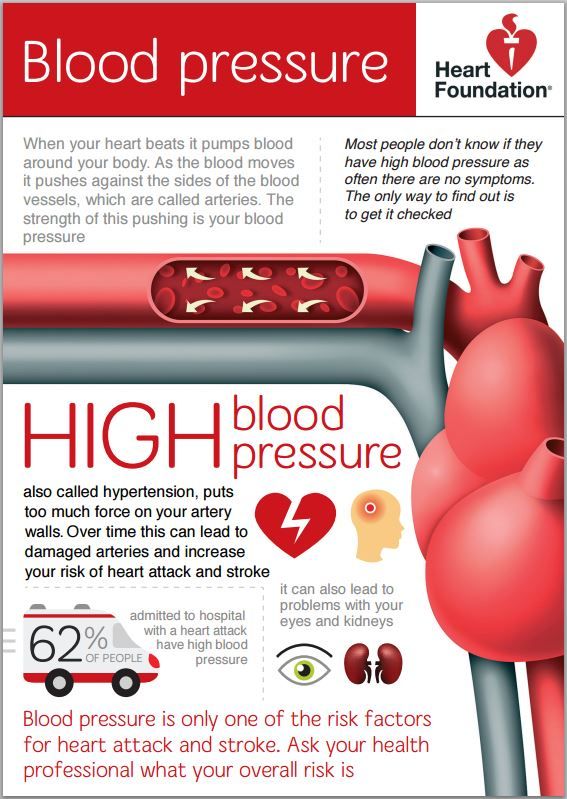 The work of Kuang-Ming Liao et al, published in 2017, involved about 2000 patients with concomitant COPD. The authors did not find any association between the use of beta-blockers and exacerbation of COPD [14]. Promising results have been obtained in experimental models. Indacaterol and metoprolol, which compete in binding to beta-adrenergic receptors, demonstrated an additive interaction in the normalization and reversal of cardiac remodeling, significantly reduced not only blood pressure, but also the size of the infarct in experiments on rats, and also reduced heart rate, leveled the deterioration of the left ventricular ejection fraction. The transfer of these results to clinical studies is of interest, since the combination of indacaterol and metoprolol can be quite effective, safe, and in demand for clinical use in patients with AH, CHF, and COPD [15].
The work of Kuang-Ming Liao et al, published in 2017, involved about 2000 patients with concomitant COPD. The authors did not find any association between the use of beta-blockers and exacerbation of COPD [14]. Promising results have been obtained in experimental models. Indacaterol and metoprolol, which compete in binding to beta-adrenergic receptors, demonstrated an additive interaction in the normalization and reversal of cardiac remodeling, significantly reduced not only blood pressure, but also the size of the infarct in experiments on rats, and also reduced heart rate, leveled the deterioration of the left ventricular ejection fraction. The transfer of these results to clinical studies is of interest, since the combination of indacaterol and metoprolol can be quite effective, safe, and in demand for clinical use in patients with AH, CHF, and COPD [15].
It is interesting to note that, despite the existing class effects of all beta-blockers, the spectrum of indications in their subgroup differs significantly. So, in comparison with bisoprolol, nevovolol and carvedilol, in the current instructions for the use of metoprolol, there are various rhythm disturbances as indications, in particular, supraventricular tachycardia, a decrease in the frequency of ventricular contraction during atrial fibrillation and ventricular extrasystoles, as well as functional disorders of cardiac activity, accompanied by tachycardia [13]. In modern studies of antiarrhythmics, metoprolol appears in the comparison groups along with propafenone, amiodarone, verapamil. A detailed analysis showed that antiarrhythmic drugs of different classes show their activity depending on the quartile belonging of patients with AH according to the rate of Na+-Li+- countertransport (Na+-Li+-PT). This conclusion was made by the authors of the study of one of the most common cardiac arrhythmias – extrasystole in patients with GB. First of all, the membrane genophenotype, the rate of Na+-Li+-PT in the erythrocyte membrane, was studied using a quartile analysis of the Na+-Li+-PT rate.
So, in comparison with bisoprolol, nevovolol and carvedilol, in the current instructions for the use of metoprolol, there are various rhythm disturbances as indications, in particular, supraventricular tachycardia, a decrease in the frequency of ventricular contraction during atrial fibrillation and ventricular extrasystoles, as well as functional disorders of cardiac activity, accompanied by tachycardia [13]. In modern studies of antiarrhythmics, metoprolol appears in the comparison groups along with propafenone, amiodarone, verapamil. A detailed analysis showed that antiarrhythmic drugs of different classes show their activity depending on the quartile belonging of patients with AH according to the rate of Na+-Li+- countertransport (Na+-Li+-PT). This conclusion was made by the authors of the study of one of the most common cardiac arrhythmias – extrasystole in patients with GB. First of all, the membrane genophenotype, the rate of Na+-Li+-PT in the erythrocyte membrane, was studied using a quartile analysis of the Na+-Li+-PT rate. Efficacy was monitored by Holter ECG monitoring with counting the number of extrasystoles before and after treatment. It was found that as the rate of Na+-Li+-PT in the erythrocyte membrane increases, the effectiveness of treating extrasystole with antiarrhythmic drugs decreases. Metoprolol, the main mechanism of action of which is the blockade of β-adrenergic receptors, is effective in patients with extrasystoles of the III quartile of the Na+-Li+-PT rate [16].
Efficacy was monitored by Holter ECG monitoring with counting the number of extrasystoles before and after treatment. It was found that as the rate of Na+-Li+-PT in the erythrocyte membrane increases, the effectiveness of treating extrasystole with antiarrhythmic drugs decreases. Metoprolol, the main mechanism of action of which is the blockade of β-adrenergic receptors, is effective in patients with extrasystoles of the III quartile of the Na+-Li+-PT rate [16].
Hypertension is the most common comorbidity in patients with atrial fibrillation (AF), with the majority of patients with AF having a high ventricular rate [17]. Therefore, for a long time, patients with AF and a high ventricular rate have been recommended beta-blockers as an antihypertensive agent. The results of the work of Kamali A. and co-authors showed better efficacy of metoprolol in comparison with amiodarone in patients with atrial fibrillation after coronary artery stenting [18].
Research continues on metoprolol in pediatric practice. It has been shown that metoprolol infusion in children with hypertensive crises in the initial dose of 0.5 µg/kg/min with titration up to 5 µg/kg/min effectively reduced blood pressure without the side effect of slowing the rhythm below the acceptable age [19]. A recent study by Jing Lin et al. [20] provides valuable data on predictors of metoprolol efficacy in children with postural tachycardia syndrome. Detection of the plasma level of natriuretic peptide showed that its high levels > 32.55 pg/ml determine an intense clinical response with a sensitivity of 95.8% and a specificity of 70%. Plasma norepinephrine levels >3.59 pg/ml [21] and copeptin [22] >10.225 pmol/l are also indicators of metoprolol efficacy in patients with postural tachycardia.
It has been shown that metoprolol infusion in children with hypertensive crises in the initial dose of 0.5 µg/kg/min with titration up to 5 µg/kg/min effectively reduced blood pressure without the side effect of slowing the rhythm below the acceptable age [19]. A recent study by Jing Lin et al. [20] provides valuable data on predictors of metoprolol efficacy in children with postural tachycardia syndrome. Detection of the plasma level of natriuretic peptide showed that its high levels > 32.55 pg/ml determine an intense clinical response with a sensitivity of 95.8% and a specificity of 70%. Plasma norepinephrine levels >3.59 pg/ml [21] and copeptin [22] >10.225 pmol/l are also indicators of metoprolol efficacy in patients with postural tachycardia.
In recent years, in the pharmacotherapy of hypertension, the dominant alternative has been the use of combinations of drugs in medium doses, as opposed to the traditional tactics of adding subsequent drugs when monotherapy with maximum or submaximal doses is ineffective. Many works in hypertension are devoted to a comparative analysis of AH monotherapy with various combinations. In their meta-analysis, Marco A. Paz et al. [23] summarized the experience of prescribing antihypertensive combinations. Although the mean reduction in SBP of the studied combinations was -20.2 (from -16.7 to -23.4), the combinations of valsartan/amlodipine, losartan/hydrochlorothiazide (HCTZ), and perindopril/indapamide showed significantly smaller reductions when compared to olmesartan/amlodipine combinations. , olmesartan / HCTZ, felodipine / metoprolol and valsartan / HCTZ, the appointment of which allowed to reduce SBP by more than 20 mm Hg.
Many works in hypertension are devoted to a comparative analysis of AH monotherapy with various combinations. In their meta-analysis, Marco A. Paz et al. [23] summarized the experience of prescribing antihypertensive combinations. Although the mean reduction in SBP of the studied combinations was -20.2 (from -16.7 to -23.4), the combinations of valsartan/amlodipine, losartan/hydrochlorothiazide (HCTZ), and perindopril/indapamide showed significantly smaller reductions when compared to olmesartan/amlodipine combinations. , olmesartan / HCTZ, felodipine / metoprolol and valsartan / HCTZ, the appointment of which allowed to reduce SBP by more than 20 mm Hg.
The need to start treatment of hypertension with combination therapy is dictated by the postulate of the ineffectiveness of monotherapy with most antihypertensive drugs. The results of post-marketing studies allow us to evaluate the tolerability and effectiveness of various pharmacotherapy regimens for hypertension. N. Srinivasa Rao et al [24] used a combination of amlodipine and metoprolol in the treatment of patients with mild to moderate hypertension.
Metoprolol has been used at a dose of 25 mg in previously untreated patients and at a dose of 50 mg in patients with a previous history of drug failure.
At baseline, patients had a mean (± SD) SBP and DBP of 154.98 (± 7.76) mmHg. and 95.55 (± 5.70) mmHg, respectively. There was a statistically significant (P<0.001) decrease of 12.16% and 14.69% SBP, 11.49% and 14.65% DBP at weeks 4 and 8, respectively, from baseline. Normalization of total BP was achieved in 49.5% and 70.7% of patients at 4 and 8 weeks, respectively. The side effect was only amlodimin-dependent - peripheral edema was observed in 2.97% of patients. Similar results were obtained by Devi P. et al. [25] in a multicenter randomized study. Metoprolol 25 mg and 50 mg in combination with amlodipine 2.5 mg and 5 mg in patients with SBP 140-180 mm Hg. Art. led to a significant decrease in blood pressure without significant adverse reactions. Compared with amlodipine monotherapy in the treatment regimen with the addition of metoprolol, SBP / DBP decreased by 8. 9/5.5 and 14.4/9.5 mm Hg (p < 0.001), respectively, after six months of treatment, which was verified during daily monitoring [26].
9/5.5 and 14.4/9.5 mm Hg (p < 0.001), respectively, after six months of treatment, which was verified during daily monitoring [26].
Thus, beta-blockers, according to numerous studies, advisory documents of the European and Russian Society of Cardiology, remain an invariably relevant clinical and pharmacological class for the treatment of GB. Unlike most other representatives of this group, metoprolol is an effective antihypertensive drug that has the widest range of indications in patients with comorbidities (ischemic heart disease, supraventricular tachycardia, ventricular premature beats, prevention of migraine attacks, hyperthyroidism, functional disorders of cardiac activity with tachycardia syndrome). The well-known aphorism of the Canadian physician William Osler says: “A novice doctor prescribes twenty medicines for each disease; an experienced doctor—one remedy in twenty? diseases.” Features of the pharmacodynamics of metoprolol, the status in the recommendatory documents and the evidence base of well-designed studies make metoprolol the most popular beta-blocker in real clinical practice from the point of view of the prevention of polypharmacy in the context of a complicated course of GB and/or polymorbid pathology.
Literature
- James PA, Oparil S, Carter BL et al. 2014 evidence-based guideline for the management of high blood pressure in adults: report from the panel members appointed to the Eighth Joint National Committee (JNC 8). JAMA 2014; 311(5): 507–20.
- Mancia G, Fagard R, Narkiewicz K et al. 2013 ESH/ESC Guidelines for the management of arterial hypertension The Task Force for the management of arterial hypertension of the European Society of Hypertension (ESH) and of the European Society of Cardiology (ESC). Journal of Hypertansion, 2013, 31: 1281-1357.
- Federal Guidelines for the Use of Medicines (formulary system) Edition XVIII (annually). – M.: Polygr. Firm “ECHO.- 2017. – 1044
- Karpov Yu.A., Sorokin E.V. Beta-blockers: more than 50 years in scientific and clinical practice // BC. 2009. No. 18. C. 1081
- Höcht C, M Bertera F, S Del Mauro J, Santander Plantamura Y, A Taira C, H Polizio A.
 ). What Is The Real Efficacy Of Beta-Blockers For The Treatment Of Essential Hypertension?// Curr Pharm Des. 2017 Jun 7. doi: 10.2174/1381612823666170608085109
). What Is The Real Efficacy Of Beta-Blockers For The Treatment Of Essential Hypertension?// Curr Pharm Des. 2017 Jun 7. doi: 10.2174/1381612823666170608085109 - Ripley TL, Saseen JJ. β-blockers: a review of their pharmacological and physiological diversity in hypertension. Ann Pharmacother. 2014 Jun;48(6):723-33. doi: 10.1177/1060028013519591
- Vyssoulis GP1, Valiouli MA, Karpanou EA, Toutouzas PK. Left ventricular and aortic root structure and function changes with beta blocker antihypertensive therapy. A one-year double blind study of celiprolol and metoprolol. Int J Cardiol. 1995 Mar 24;49(1):45-54
- Weir MR. Beta-blockers in the treatment of hypertension: are there clinically relevant differences? Postgrad Med. 2009 May;121(3):90-8. doi:10.3810/pgm.2009.05.2007
- Mehanna M, Gong Y, McDonough CW, Beitelshees AL, Gums JG, Chapman AB3, Schwartz GL, Johnson JA, Turner ST, Cooper-DeHoff RM.
 Blood pressure response to metoprolol and chlorthalidone in European and African Americans with hypertension. J Clin Hypertens (Greenwich). 2017 Sep 21. doi: 10.1111/jch.13094
Blood pressure response to metoprolol and chlorthalidone in European and African Americans with hypertension. J Clin Hypertens (Greenwich). 2017 Sep 21. doi: 10.1111/jch.13094 - Chesnikova A.I., Batyushin M.M., Terentyev V.P. Arterial hypertension and comorbidity: state of the art. Arterial hypertension. 2016. V. 22. No. 5. S. 432-440.;
- Reznik L.A. The effectiveness of combined antihypertensive, lipid-lowering and antidiabetic therapy in patients with hypertension in combination with type 2 diabetes mellitus. Scientific statements of the Belgorod State University. Series: Medicine. Pharmacy. 2013. V. 23. No. 18. P. 49-53
- Theresa I. Shireman, Jonathan D. Mahnken, Milind A. Phadnis, and Edward F. Ellerbeck. Effectiveness comparison of cardio-selective to non-selective β-blockers and their association with mortality and morbidity in end-stage renal disease: a retrospective cohort study. BMC Cardiovasc Discord.
 2016; 16:60. Published online 2016 Mar 25. doi: 10.1186/s12872-016-0233-3
2016; 16:60. Published online 2016 Mar 25. doi: 10.1186/s12872-016-0233-3 - State register of medicines. http://grls.rosminzdrav.ru/
- Liao K-M, Lin T-Y, Huang Y-B, Kuo C-C, Chen C-Y. The evaluation of β-adrenoceptor blocking agents in patients with COPD and congestive heart failure: a nationwide study//Int J Chron Obstruct Pulmon Dis. 2017; 12:2573–2581.
- Rinaldi B, Donniacuo M, Sodano L, Gritti G, Martuscelli E, Orlandi A, Concetta Rafaniello C, Francesco Rossi F, Calzetta L, Capuano A, Gabriella Matera M. Effects of chronic treatment with the new ultra-long-acting β2-adrenoceptor agonist indacaterol alone or in combination with the β1-adrenoceptor blocker metoprolol on cardiac remodeling// Br J Pharmacol. 2015 Jun; 172(14): 3627–3637. doi:10.1111/bph.13148
- V.N.Oslopov, Yu.V.Oslopova. Antiarrhythmic drugs of various classes in the treatment of extrasystole – focus on the cell membrane.
 Practical Medicine, 68 ‘2 (103) April 2017, pp 68-72 Camm AJ, Lip GY, De Caterina R et al. 2012 focused update of the ESC Guidelines for the management of atrial fibrillation: An update of the 2010 ESC Guidelines for the management of atrial fibrillation. Eur Heart J 2012; 33:2719–3274.
Practical Medicine, 68 ‘2 (103) April 2017, pp 68-72 Camm AJ, Lip GY, De Caterina R et al. 2012 focused update of the ESC Guidelines for the management of atrial fibrillation: An update of the 2010 ESC Guidelines for the management of atrial fibrillation. Eur Heart J 2012; 33:2719–3274. - Camm AJ, Lip GY, De Caterina R et al. 2012 focused update of the ESC Guidelines for the management of atrial fibrillation: An update of the 2010 ESC Guidelines for the management of atrial fibrillation. Eur Heart J 2012; 33:2719–3274.
- Kamali A, Sanatkar A, Sharifi M, Moshir E. Evaluation of amiodarone versus metoprolol in treating atrial fibrillation after coronary artery bypass grafting//1Interv Med Appl Sci. 2017 Jun;9(2):51-55. doi: 10.1556/1646.9.2017.2.11
- Saqan R, Hanan Thiaba H. Cite as Evaluation of the safety and efficacy of metoprolol infusion for children and adolescents with hypertensive crises: a retrospective case series//Pediatric Nephrologypp 1–7 https://doi.
 org/10.1007/s00467-017-3792-3
org/10.1007/s00467-017-3792-3 - Jing Lin, Zhenhui Han, Hongxia Li, Selena Ying Chen, Xueying Li, Ping Liu, Yuli Wang, Chaoshu Tang, Junbao Du, and Hongfang Jin. Plasma C-Type Natriuretic Peptide as a Predictor for Therapeutic Response to Metoprolol in Children with Postural Tachycardia Syndrome. Pediatric Nephrologypp 1–7. PLOS One. 2015; 10(3): e0121913 https://doi.org/10.1007/s00467-017-3792-3
- Zhang Q, Chen X, Li J, Du J. Orthostatic plasma norepinephrine level as a predictor for therapeutic response to metoprolol in children with postural tachycardia syndrome// Transl Med. 2014 Sep 10;12:249. doi:10.1186/s12967-014-0249-3
- Zhao J, Du S, Yang J, Lin J, Tang C, Du J, Jin H. Usefulness of plasma copeptin as a biomarker to predict the therapeutic effectiveness of metoprolol for postural tachycardia syndrome in children Am J Cardiol. 2014 Aug 15;114(4):601-5. doi: 10.1016/j.amjcard.2014.05.039.
- Paz M.
 A., de-La-Sierra A, Sáez M, Barceló M A, Rodríguez J J, Castro S, Lagarón C, Garrido J M, Vera P, Coll-de-uero G. Treatment efficacy of anti-hypertensive drugs in monotherapy or combination ATOM systematic review and meta-analysis of randomized clinical trials according to PRISMA state// Medicine (Baltimore) 2016 Jul; 95(30): e4071. Published online 2016 Jul 29. doi: 10.1097/MD.0000000000004071
A., de-La-Sierra A, Sáez M, Barceló M A, Rodríguez J J, Castro S, Lagarón C, Garrido J M, Vera P, Coll-de-uero G. Treatment efficacy of anti-hypertensive drugs in monotherapy or combination ATOM systematic review and meta-analysis of randomized clinical trials according to PRISMA state// Medicine (Baltimore) 2016 Jul; 95(30): e4071. Published online 2016 Jul 29. doi: 10.1097/MD.0000000000004071 - Rao N.S, Oomman A, Bindumathi P.L., Sharma V., Rao S., Moodahadu L.S., Ashis Patnaik A,5 Kumar B.R. N and others. Efficacy and tolerability of fixed dose combination of metoprolol and amlodipine in Indian patients with essential hypertension// J Midlife Health. 2013 Jul-Sep; 4(3): 160–166. doi: 10.4103/0976-7800.119000PMCID: PMC3952407
- Devi P, Xavier D, Sigamani A, Pandey S, Thomas T, Murthy S, Sharma K, Bosco B, Mehta K, Joshi S, Gupta R, Singh G, Hiremath J, Ds C, Nambiar A, Pais P. Effect of fixed dose combinations of metoprolol and amlodipine in essential hypertension: MARS–a randomized controlled trial.
 Blood Press Suppl. 2011 Dec;2:5-12.
Blood Press Suppl. 2011 Dec;2:5-12. - Haria M, Plosker GL, Markham A. Felodipine/metoprolol: a review of the fixed dose controlled release formulation in the management of essential hypertension//. drugs. 2000 Jan;59(1):141-57A
b-Adrenergic blockers in cardiovascular diseases: focus on metoprolol
References
1. RMOAG/VNOK recommendations for the diagnosis and treatment of arterial hypertension (fourth revision). 2010.
2. Mancia G, Fagard R, Narkiewicz K et al. Practice guidelines for the management of arterial hypertension of the European Society of Hypertension (ESH) and the European Society of Cardiology (ESC): ESH/ESC Task Force for the Management of Arterial Hypertension. J Hypertens 2013; 31:1925–38.
3. Expert agreement document on β-adrenergic receptor blockers. European Society of Cardiology Working Group on beta-blockers. Cardiovasc. therapy and prevention. 2005; 1:99–124.
4. Lupanov V.P. Treatment of patients with ischemic heart disease after coronary bypass surgery and percutaneous coronary interventions. Atmosphere. Cardiology. 2007; 3:18–24.
Atmosphere. Cardiology. 2007; 3:18–24.
5. Bangalore S, Wild D, Parkar S et al. Beta-blockers for primary prevention of heart failure in patients with hypertension: insights from a meta-analysis. JACC 2008; 52:1062–72.
6. Nuttall SL, Routledge HC, Kendall MJ. A comparison of the beta1-selectivity of three beta-blockers. J Clin Pharmacol 2003; 28(3): 179–86.
7. Sandberg A, Abrahamsson B, Regardh CG et al. Pharmacokinetic and biopharmaceutic aspects of once daily treatment with metoprolol CR/ZOK: a review article. J Clin Pharmacol 1990; 30 (Suppl. 2): S2–16.
8. Chazova I.E. b-Adrenergic blockers: place of their use in arterial hypertension in modern conditions. Systemic hypertension. 2007; 2:4–7.
9. Karpov Yu.A., Shubina A.T. b-blockers today: at the forefront in the fight against cardiovascular disease. Rus. honey. magazine 2004; 12(15): 901–4.
10. Reiter MJ. Cardiovascular drug class specificity: b-blockers. Progressin Cardiovasc Dis 2004; 47(1):11–33.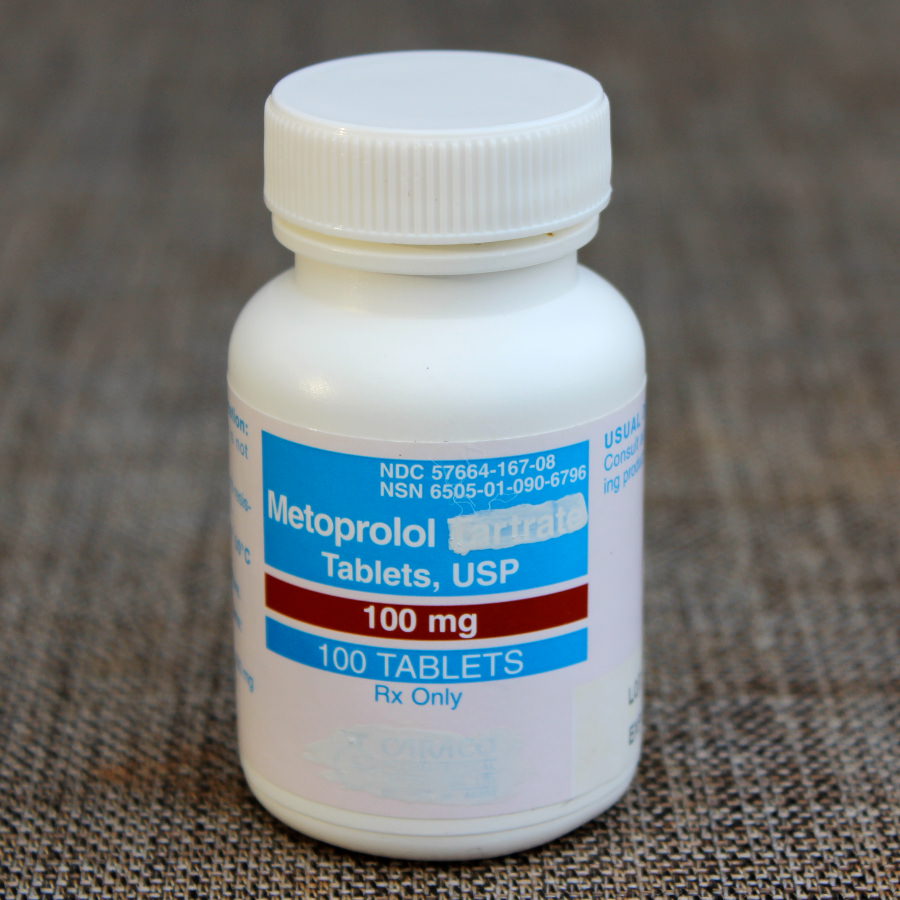
11. Tolpygina S.N., Martsevich S.Yu. Efficacy and safety of high-dose long-acting metoprolol in the treatment of patients with stable coronary heart disease. Ration. pharmacotherapy in cardiology. 2008; 5:46–52.
12. Savonitto S, Ardissiono D, Egstrup K et al. Combination therapy with metoprolol and nifedipine versus monotherapy in patients with stable angina pectoris. Results of the international multicenter angina exercise (IMAGE) study. J Am Coll Cardiol 1996; 27(2): 311–6.
13. Rehnqvist N, Hjemdahl P, Billing E et al. Treatment of stable angina pectoris with calcium antagonists and beta-blockers. The APSIS study. Angina Prognosis study in Stockholm. Cardiology 1995; 40 (12 Suppl. 1): 301.
14 Ardissino D, Savonitto S, Egstrup K et al. Selection of medical treatment in stable angina pectoris: results of the InternationalMulticenter Angina Exercise (IMAGE) study. J Am Coll Cardiol 1995; 25:1516–21.
15. Egstrup K, Gundersen T, Härkönen R et al. The antianginal efficacy and tolerability of controlled-release metoprolol once daily: A comparison with conventional metoprolol tablets twice daily Eur J Clin Pharmacol 1988; (Suppl. 33): S45–9.
33): S45–9.
16. Hjalmarson A, Elmfeldt D, Herlitz J et al. Effect on mortality of metoprolol in acute myocardial infarction: A double-blind randomized trial. Lancet 1981; 2 (8251): 823–7.
17. Herlitz J, Waagstein F, Lindqvist J et al. Effect of metoprolol on the prognosis for patients with suspected acute myocardial infarction and indirect signs of congestive heart failure (subgroup analysis of the Goteborg Metoprolol Trial). Am J Cardiol 1997; 80(9B): 40J–44J.
18. The MIAMI Trial Research Group: Metoprolol in acute myocardial infarction (MIAMI): A randomized placebo-controlled international trial. Eur Heart J 1985; 6(3): 199–226.
19. Chen ZM, Pan HC, Chen YP et al. Early intravenous then oral metoprolol in 45,852 patients with acute myocardial infarction: randomised placebo-controlled trial. Lancet 2005; 366 (9497): 1622–32.
20. Guidelines for the management of patients with ST-elevation myocardial infarction: a report of the American College of Cardiology/American Heart Association Task Force on Practice Guidelines. J Am Coll Cardiol 2008; 51(2): 210–47.
J Am Coll Cardiol 2008; 51(2): 210–47.
21 Van de Werf F, Bax J, Betriu A et al. Management of acute myocardial infarction in patients presenting with persistent ST-segment elevation: the Task Force on the Management of ST-Segment Elevation Acute Myocardial Infarction of the European Society of Cardiology. Eur Heart J 2008; 29(23): 2909–45.
22. Diagnosis and treatment of patients with acute myocardial infarction with ST elevation on the ECG. Ed. R.G.Oganova, M.N.Mamedova. National wedge. recommendations. Moscow: MEDI Expo, 2009; With. 167–230.
23. Hjalmarson A, Herlitz J, Holmberg S et al. The Goteborg metoprolol trial. Effects on mortality and morbidity in acute myocardial infarction. Circulation 1983; 67 (6 Pt 2): I26–32.
24. Yusuf S, Lessem J, Jha P, Lonn E. Primary and secondary prevention of myocardial infarction and strokes: an update of randomly allocated, controlled trials. J Hypertens (Suppl.) 1993; 11(4): S61–73.
25. Freemantle N, Cleland J, Young P et al. Beta-blockade after myocardial infarction: systematic review and meta regression analysis. BMJ 1999; 318 (7200): 1730–7.
Beta-blockade after myocardial infarction: systematic review and meta regression analysis. BMJ 1999; 318 (7200): 1730–7.
26. Olsson G, Rehnqvist N, Sjögren A et al. Long-term treatment with metoprolol after myocardial infarction: effect on 3 year mortality and morbidity. J Am Coll Cardiol 1985; 5(6): 1428–37.
27. Manger Cats V, van Capelle FLJ, Lie KJ, Durrer D. The Amsterdam metoprolol trial. Effect of treatment with metoprolol on first year mortality in a single-centre study with low placebo mortality rate after myocardial infarction (Abstract). drugs 1985; 29 (Suppl. 1): 8.
28 Yusuf S, Peto R, Lewis J et al. Beta blocade during and after myocardial infarction: an overview of the randomized trials. Prog Cardiovasc Dis 1985; 27(5): 335–71.
29. Herlitz J, Dellborg M, Karlson BW et al. Long-term mortality after acute myocardial infarction in relation to prescribed dosages of a beta-blocker at hospital discharge. Cardiovasc Drugs Ther 2000; 14(6): 589–95.
30 Viskin S, Kitzis I, Lev E et al. Treatment with beta-adrenergic blocking agents after myocardial infarction: from randomized trials to clinical practice. J Am Call Cardiol 1995; 25:1327–32.
Treatment with beta-adrenergic blocking agents after myocardial infarction: from randomized trials to clinical practice. J Am Call Cardiol 1995; 25:1327–32.
31. Kjeksus JK, Gilpin E, Cali G et al. Diabetic patients and beta-blockers after acute myocardial infarction. Eur Heart J 1990:11:43–50.
32. Chen J, Marciniac TA, Radford MJ et al. Beta-blocker therapy for secondary prevention of myocardial infarction in elderly diabetic patients. JACC 1999; 34:1388–94.
33. Gottlieb S. Effect of beta-blockade on mortality among high-risk and low-risk patients after myocardial infarction. N Engl J Med 1998; 339(8): 489–97.
34. Andersson B, Aberg J. The effect on heart rate of immediate and slow-release metoprolol in patients with chronic heart failure [abstr. 1110–10]. J Am Coll Cardiol 1999; 33 (Suppl. A): A183–4.
35. Belousov Yu.B., Leonova M.V., Maneshina O.A. Metoprolol succinate and tartrate: does salt affect drug efficacy? Pharmateka. 2006; 19 (134): 14–9.
36. Jaattela A, Baandrup S, Houtzagers J, Westergren G. The efficacy of low dose metoprolol CR/ZOK in mild hypertension and in elderly patients with mild to moderate hypertension. J Clin Pharmacol 1990; 30 (Suppl. 2): S66–71.
37. Klein G, Berger J, Olsson G, Menzel T. A double-blind comparison of metoprolol CR/ZOK 50 mg and atenolol 50 mg once daily for uncomplicated hypertension. J Clin Pharmacol 1990; 30 (Suppl. 2): S72–7.
38. Omvik P, Leer J, Istad H, Westergren G. Equal Efficacy and Improved Tolerability with 50 mg Controlled-Release Metoprolol Compared with 100 mg Conventional Metoprolol in Hypertensive Patients. Am J Ther 1994; 1(1): 65–73.
39 Wikstrand J, Warnold I, Tuomilehto J et al. Metoprolol versus thiazide diuretics in hypertension. Morbidity results from the MAPHY Study. Hypertension 1991; 17(4): 579–88.
40. Hedblad B, Wikstrand J, Janzon L et al. Low-dose metoprolol CR/XL and fluvastatin slow progression of carotid intima–media thickness: Main results from the Beta-Blocker Cholesterol-Lowering Asymptomatic Plaque Study (BCAPS).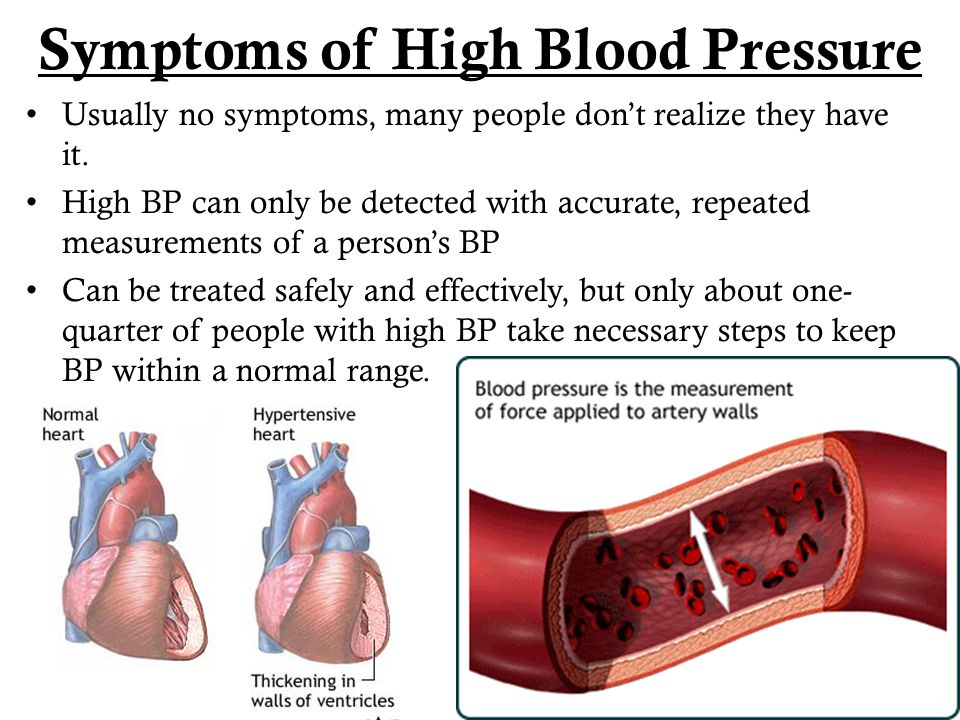 Circulation 2001; 103(13): 1721–6.
Circulation 2001; 103(13): 1721–6.
41 Wiklund O, Hulthe J, Wikstrand J et al. Effect of Controlled Release/Extended Release Metoprolol on Carotid Intima–Media Thickness in Patients With Hypercholesterolemia: A 3-Year Randomized Study. Stroke 2002; 33(2): 572–57.
42. Singh BN. CIBIS, MERIT–HF and COPERNICUS trial outcomes: do they complete the chapter on beta-adrenergic blockers as antiarrhytmic and antifibrillatory drugs? J Cardiovasc Pharmacol Ther 2001; 6(2):107–10.
43. Hjalmarson A. Effects of beta-blockade on sudden cardiac death during acute myocardial infarction and the postinfarction period. Am J Cardiol 1997; 80(9B): 35J–9J.
44. Nuttall SL, Toescu V, Kendall MJ. Beta-blockade after myocardial infarction. BMJ2000; 320:581–8.
45. Moss AJ, Zareba W, Hall WJ et al. Effectiveness and limitations of beta-blocker therapy in congenital long-QT syndrome. Circulation 2000; 101(6): 616–23.
46. Viskin S, Fish R. Prevention of ventricular arrhythmias in the congenital long QT syndrome. Curr Cardiol Rep 2000; 2(6):492–7.
Curr Cardiol Rep 2000; 2(6):492–7.
47. Bouzamondo A, Hulot JS, Sanchez P et al. Beta-blocker treatment in heart failure. Fund & Clin Pharmacol 2001; 15:95–109.
48. Sharpe N. Benefit of beta-blockers for heart failure: proven in 1999 Lancet 1999; 353: 1988–9.
49. Bristow MR. Beta-adrenergic blockade in chronic heart failure. Circulation 2000; 101:558–69.
50. Lonn E, McKelvie R. Drug treatment in heart failure. BMJ2000; 320:1188–92.
51. Arutyunov G.P. Beta blockers and heart failure. Heart failure. 2002; 1:27–8.
52. National recommendations OSSN, RKO and RNMOT for the diagnosis and treatment of CHF (fourth revision). 2013.
53. ESC Guidelines for diagnosis and treatment of acute and chronic heart failure. Eur Heart J 2012; 33: 1787–847.
54. MERIT-HF Study Group. Effect of metoprolol CR/XL in chronic heart failure: Metoprolol CR/XL Randomized Intervention Trial in Congestive Heart Failure (MERIT-HF). Lancet 1999; 353: 2001–7.
55 Goldstein S, Fagerberg B, Hjalmarson A et al. Metoprolol controlled release extended release in patients with severe heart failure. Analysis of the experience in the MERIT–HF study. J Am Coll Cardiol 2001; 38:932–8.
Metoprolol controlled release extended release in patients with severe heart failure. Analysis of the experience in the MERIT–HF study. J Am Coll Cardiol 2001; 38:932–8.
56. Deedwania PC, Gottlieb S, Ghali JK et al. Efficacy, safety and tolerability of betaadrenergic blockade with metoprolol CR/XL in elderly patients with heart failure. Eur Heart J 2004; 25:1300–9.
57 Wikstrand J, Hjalmarson A, Waagstein F et al. MERIT–HF Study Group. Dose of metoprolol CR/XL and clinical outcomes in patients with heart failure: analysis of the experience in metoprolol CR/XL randomized intervention trial in chronic heart failure (MERIT–HF). J Am Coll Cardiol 2002; 40(3): 491–8.
58. MERIT-HF Study Group. Effect of metoprolol CR/XL in chronic heart failure: Metoprolol CR/XL Randomized Intervention Trial in Congestive Heart Failure (MERIT-HF). Lancet 1999; 353 (9169): 2001–7.
59. Effects of metoprolol CR in patients with ischemic and dilated cardiomyopathy: the randomized evaluation of strategies for left ventricular dysfunction pilot study.

 The relevance of a particular drug interaction to a specific individual is difficult to determine. Always consult your healthcare provider before starting or stopping any medication.
The relevance of a particular drug interaction to a specific individual is difficult to determine. Always consult your healthcare provider before starting or stopping any medication.
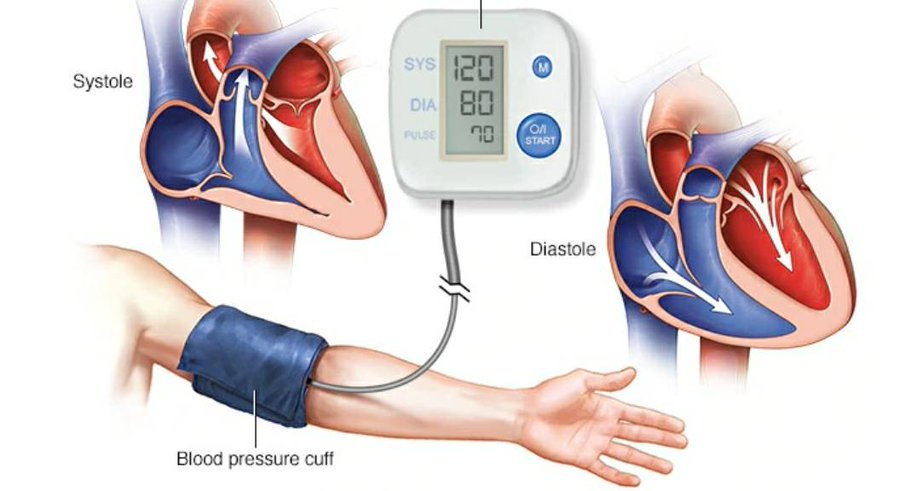
 S. National Library of Medicine
S. National Library of Medicine ). What Is The Real Efficacy Of Beta-Blockers For The Treatment Of Essential Hypertension?// Curr Pharm Des. 2017 Jun 7. doi: 10.2174/1381612823666170608085109
). What Is The Real Efficacy Of Beta-Blockers For The Treatment Of Essential Hypertension?// Curr Pharm Des. 2017 Jun 7. doi: 10.2174/1381612823666170608085109 Blood pressure response to metoprolol and chlorthalidone in European and African Americans with hypertension. J Clin Hypertens (Greenwich). 2017 Sep 21. doi: 10.1111/jch.13094
Blood pressure response to metoprolol and chlorthalidone in European and African Americans with hypertension. J Clin Hypertens (Greenwich). 2017 Sep 21. doi: 10.1111/jch.13094 2016; 16:60. Published online 2016 Mar 25. doi: 10.1186/s12872-016-0233-3
2016; 16:60. Published online 2016 Mar 25. doi: 10.1186/s12872-016-0233-3 Practical Medicine, 68 ‘2 (103) April 2017, pp 68-72 Camm AJ, Lip GY, De Caterina R et al. 2012 focused update of the ESC Guidelines for the management of atrial fibrillation: An update of the 2010 ESC Guidelines for the management of atrial fibrillation. Eur Heart J 2012; 33:2719–3274.
Practical Medicine, 68 ‘2 (103) April 2017, pp 68-72 Camm AJ, Lip GY, De Caterina R et al. 2012 focused update of the ESC Guidelines for the management of atrial fibrillation: An update of the 2010 ESC Guidelines for the management of atrial fibrillation. Eur Heart J 2012; 33:2719–3274.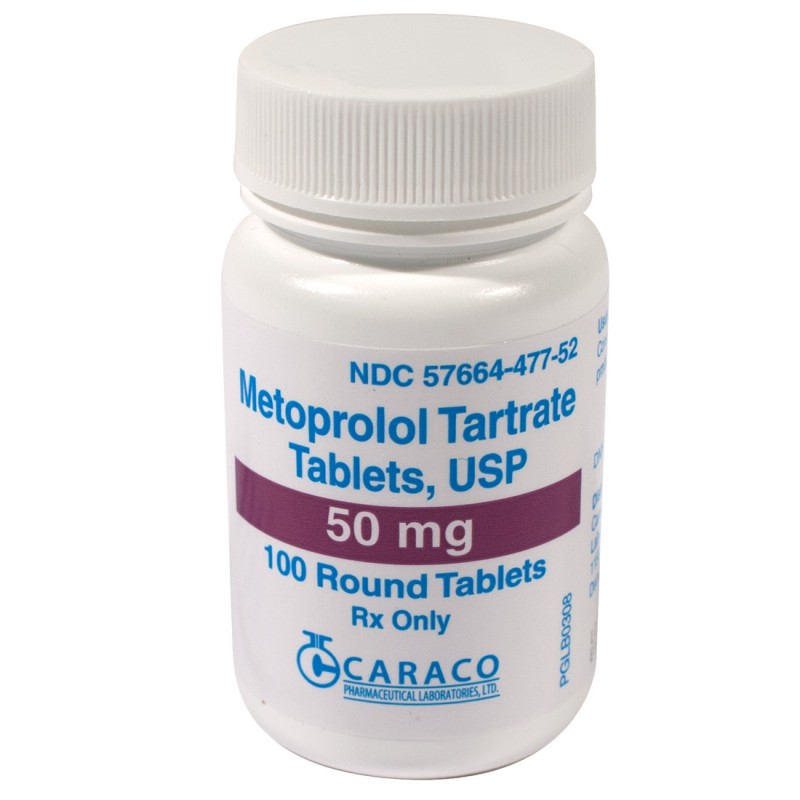 org/10.1007/s00467-017-3792-3
org/10.1007/s00467-017-3792-3 A., de-La-Sierra A, Sáez M, Barceló M A, Rodríguez J J, Castro S, Lagarón C, Garrido J M, Vera P, Coll-de-uero G. Treatment efficacy of anti-hypertensive drugs in monotherapy or combination ATOM systematic review and meta-analysis of randomized clinical trials according to PRISMA state// Medicine (Baltimore) 2016 Jul; 95(30): e4071. Published online 2016 Jul 29. doi: 10.1097/MD.0000000000004071
A., de-La-Sierra A, Sáez M, Barceló M A, Rodríguez J J, Castro S, Lagarón C, Garrido J M, Vera P, Coll-de-uero G. Treatment efficacy of anti-hypertensive drugs in monotherapy or combination ATOM systematic review and meta-analysis of randomized clinical trials according to PRISMA state// Medicine (Baltimore) 2016 Jul; 95(30): e4071. Published online 2016 Jul 29. doi: 10.1097/MD.0000000000004071 Blood Press Suppl. 2011 Dec;2:5-12.
Blood Press Suppl. 2011 Dec;2:5-12.